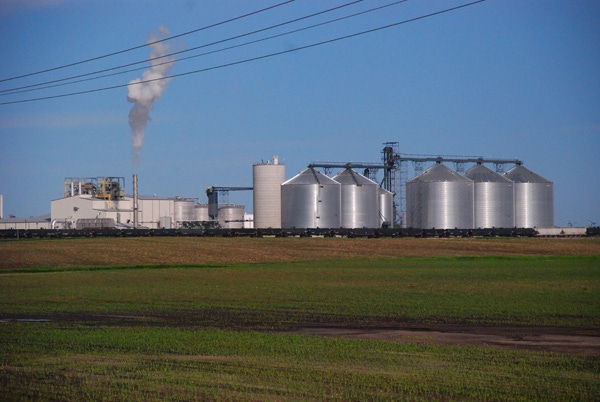The Environmental Protection Agency proposes to reduce the levels of renewable fuels for blending into gasoline and diesel next year.
November 16, 2013

Less of this year’s bumper corn crop will be burned as ethanol if the Environmental Protection Agency (EPA) sticks to the proposal it released Friday.
The agency’s proposed levels of renewable fuels for blending into gasoline and diesel next year are 1.34 billion gal. less than this year’s Renewable Volume Obligation (RVO) under the Renewable Fuels Standard (RFS). That’s according to the EPA proposal released for a 60-day public comment period.
In cowboy terms, EPA apparently finally recognized the blend wall is more than a fancy term. It prevents achieving the statutory RFS requirement. U.S. gas consumption decreased significantly since the RFS was implanted via the Energy Independence and Security Act of 2007. In order to avoid the wall and comply with the RFS, U.S. producers would have to decrease gasoline production or export more production. This considers corn-based ethanol, specifically, which accounts for 83% of the of mandated renewable fuel levels this year.
The implied proposed volume of corn-based ethanol for 2014 is about 13.1 billion gallons. That’s taking the total RVO of 15.21 billion gal. (range of 15.00-15.52 billion gal.) in the EPA proposal and subtracting the estimated 2.2 billion gal. of estimated other renewable fuels (biomass-based diesel and cellulosic biofuel).
More specifically, according to the submitted proposal (way down on page 175 out of 204 if you’re interested), “The ranges that we are proposing for advanced biofuel and total renewable fuel determine the range of non-advanced renewable fuel that would be needed. The majority of non-advanced renewable fuel is ethanol made from corn starch … the volume of corn-ethanol that would be needed would be 12.94-13.07 billion gal.”
Subscribe now to Cow-Calf Weekly to get the latest industry research and information in your inbox every Friday!
The outcry from ethanol proponents is as loud as it is predictable. Compared to the original, untenable RFS, the proposed rule does represent a reduction in mandated ethanol. Compared to recent years, though, 13.1 billion gal. of corn-ethanol would represent an increase.
According to the proposal narrative, “This range represents an increase in comparison to 2012 corn-ethanol consumption, which was about 12.5 billion gal. While this range represents a reduction in comparison to the statutory volumes for 2014, it nonetheless represents an increase relative to projected 2013 corn-ethanol consumption of about 12.3 billion gal…”
Moreover, while the proposal represents some relief for ethanol opponents, it falls short of the repeal many want.
“EPA’s decision to reduce the ethanol mandate is long overdue,” says Mark Dopp, vice president of regulatory affairs and general counsel for the American Meat Institute (AMI). “While this is a positive step, the fact remains the RFS is a flawed policy that requires Congressional action.”
Ironically, the way EPA is going about achieving the proposed reduction has ethanol proponents questioning the agency’s legal authority, something even opponents can commiserate with.
“Even with a record corn crop expected this year, the damaging ripple effect of this defective policy has moved through the meat and poultry complex for the past several years. The time for Congressional action is now,” Dopp says.
You might also like:
15 Best Winter On The Ranch Photos
Readers Share Bred Heifer Prices In Their Neck Of The Woods
Share This --> Infographics Highlight Beef's Story From Gate To Plate
Simple Steps To Up Your Cow Herd's Profitability
How To Treat Hoof Cracks In Cattle
Do Beta-Agonists Figure Into Fatigued-Cattle Syndrome? Dan Thomson Says Yes
About the Author(s)
You May Also Like





